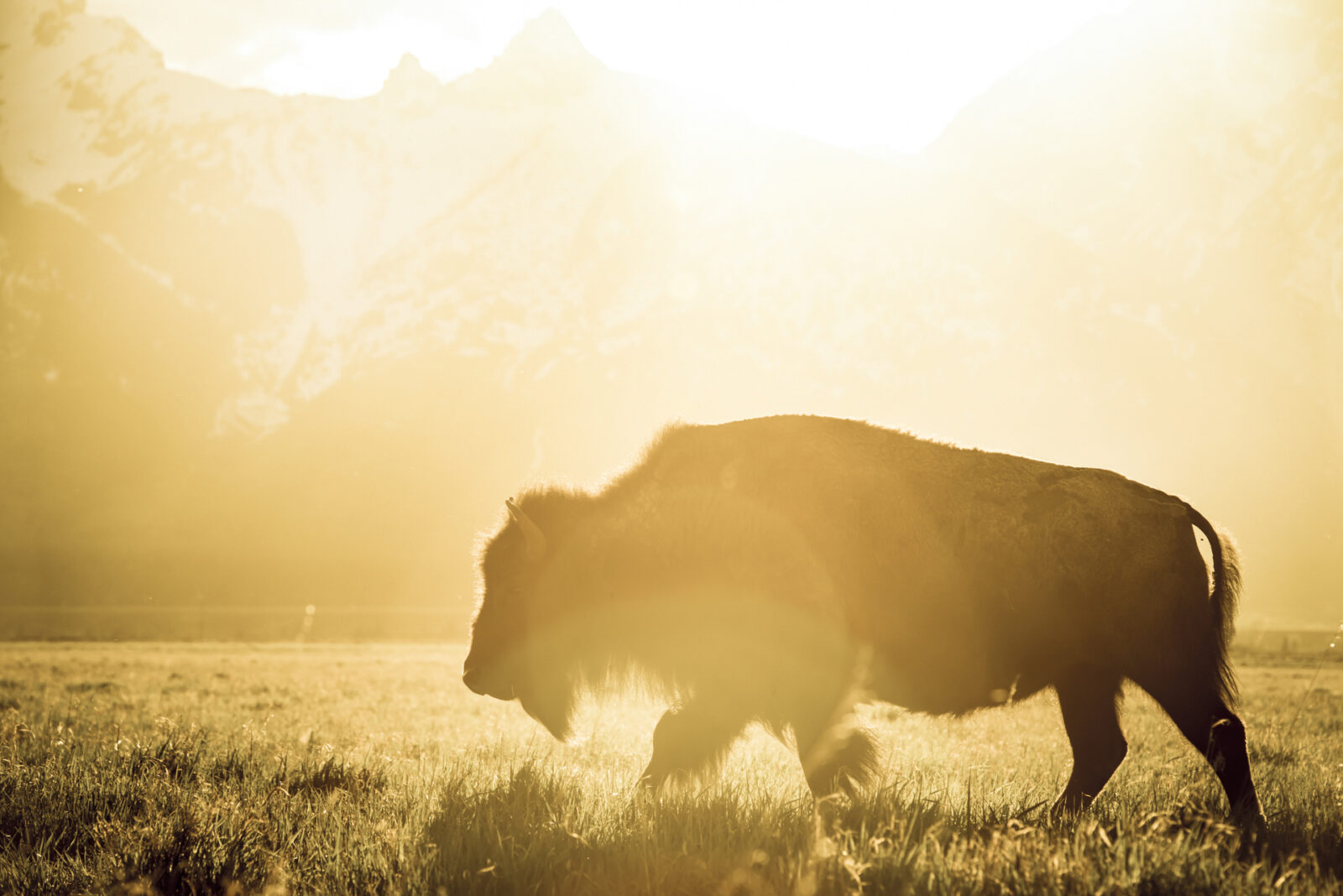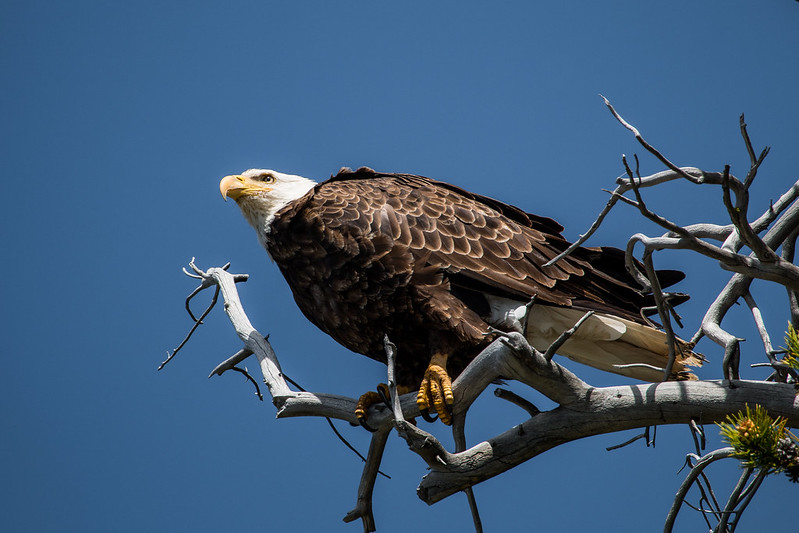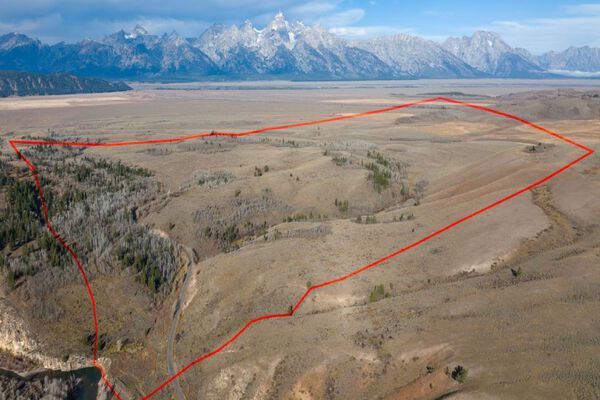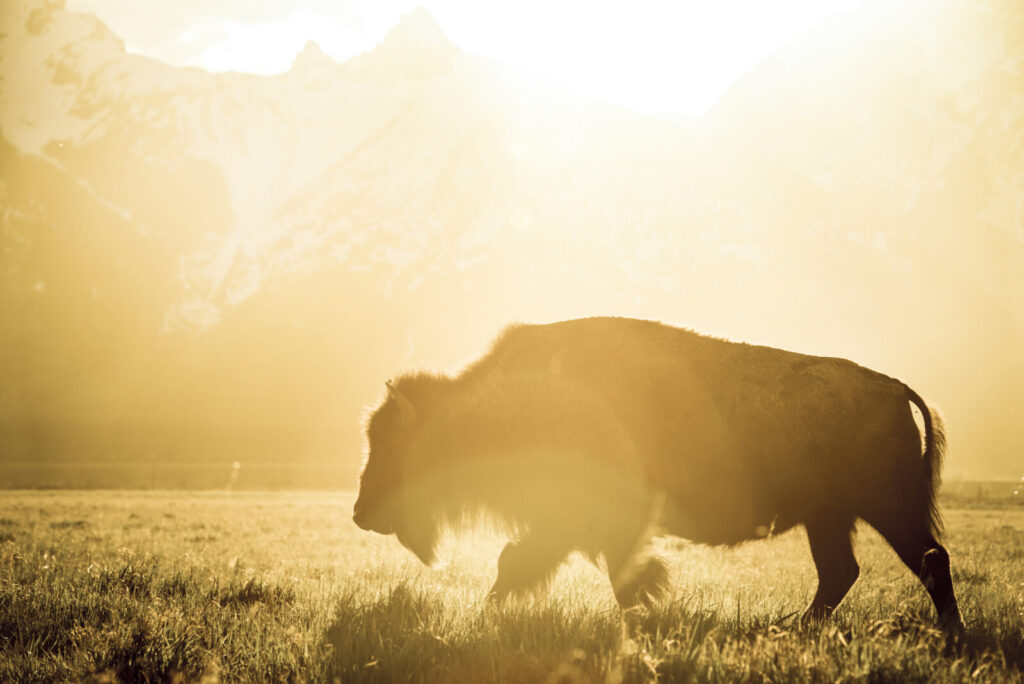
Warming temperatures, valley snowmelt, and the eventual greening of vegetation will help many of Grand Teton’s animals replenish critical energy reserves, particularly the pregnant females that will be giving birth over the next two months.
The northern migration of elk from the National Elk Refuge into Grand Teton National Park has begun! Since river banks and east facing slopes melt early, typical patterns trace initial elk movement into the Snake River corridor, just north of park headquarters in Moose.
Wolves, foxes, and coyotes can be found out and about, localizing around their den sites, and tending to newborn pups and kits.
Early-season nesting birds such as bald eagles, ravens, great-horned owls, and others are most frequently found in their nests, incubating newly laid eggs.
Migratory birds who left Jackson Hole in the fall are returning in increasing numbers. Keep your eyes peeled for osprey, American robins, mountain bluebirds, meadowlarks, sandhill cranes, and others who have returned to the valley.
Bears have been slow to emerge this year, but they will be out in increasing numbers in the weeks to come. They'll be roaming about, actively searching for winter-killed carcasses, left over berries, and new vegetation on which they feed during these spring months. Be sure to carry bear spray when traveling throughout the ecosystem.
Melting pond ice means that beavers are showing up to raise new families inside their dens.
Along with early spring weather, bighorn sheep in the Tetons are moving off their high elevation winter ranges to mid-elevations in order to access nutritious vegetation green-up.
Have you seen any “ghost moose” this spring? Moose with a ghost-like appearance are exhibiting the effects of winter tick infestations, which results in patches of broken hair or bare skin from attempts to rub off the ticks.
Sage grouse numbers at their lek (waiting) sites will likely peak at the end of April or the first part of May.
The NPS is extending winter closures established to protect wintering bighorn sheep from human disturbance due to persistent winter conditions and a deep snowpack at high elevations throughout the Teton Range. The closures, set to expire on May 1, will now extend through May 15 in the following areas:
- Prospector’s Mt., Mt. Hunt, Peaks 10988, 10905 and 10495, and south facing slopes on Mt. Hunt above 2600m (8580 ft.) elevation.
- Slopes of Static Peak above 3300m (10890 ft.), including Static Peak.
- The NPS also asks recreationists to continue to voluntarily avoid bighorn sheep winter zones within Grand Teton National Park through May 15.
Please remember that due to deep snowpack in the Jackson area, deer, elk, and moose still face challenges as their winter fat reserves have been depleted and new season plant growth is not yet available or is in its earliest stages and limited in distribution. Energy conservation is still a high priority.











